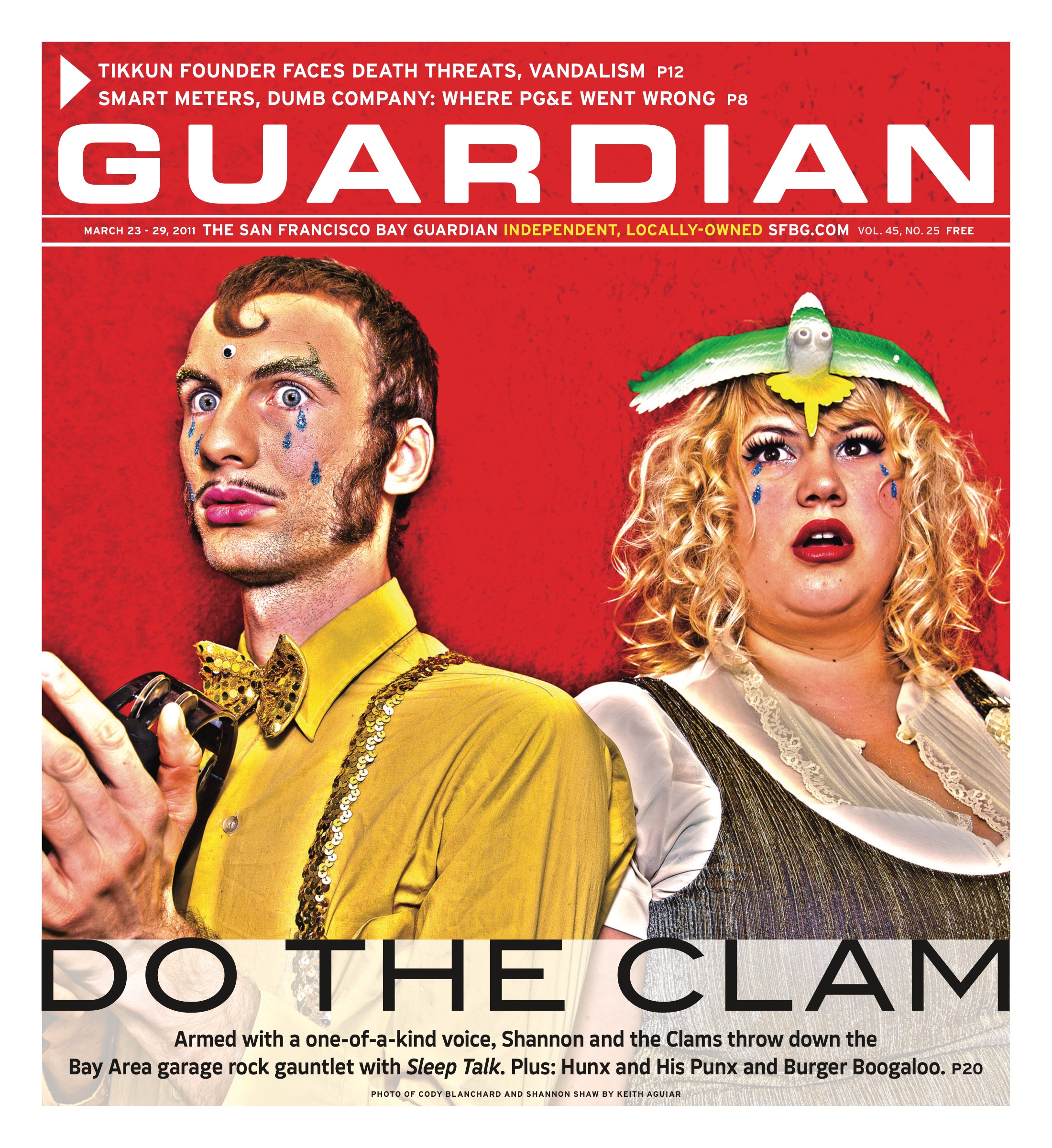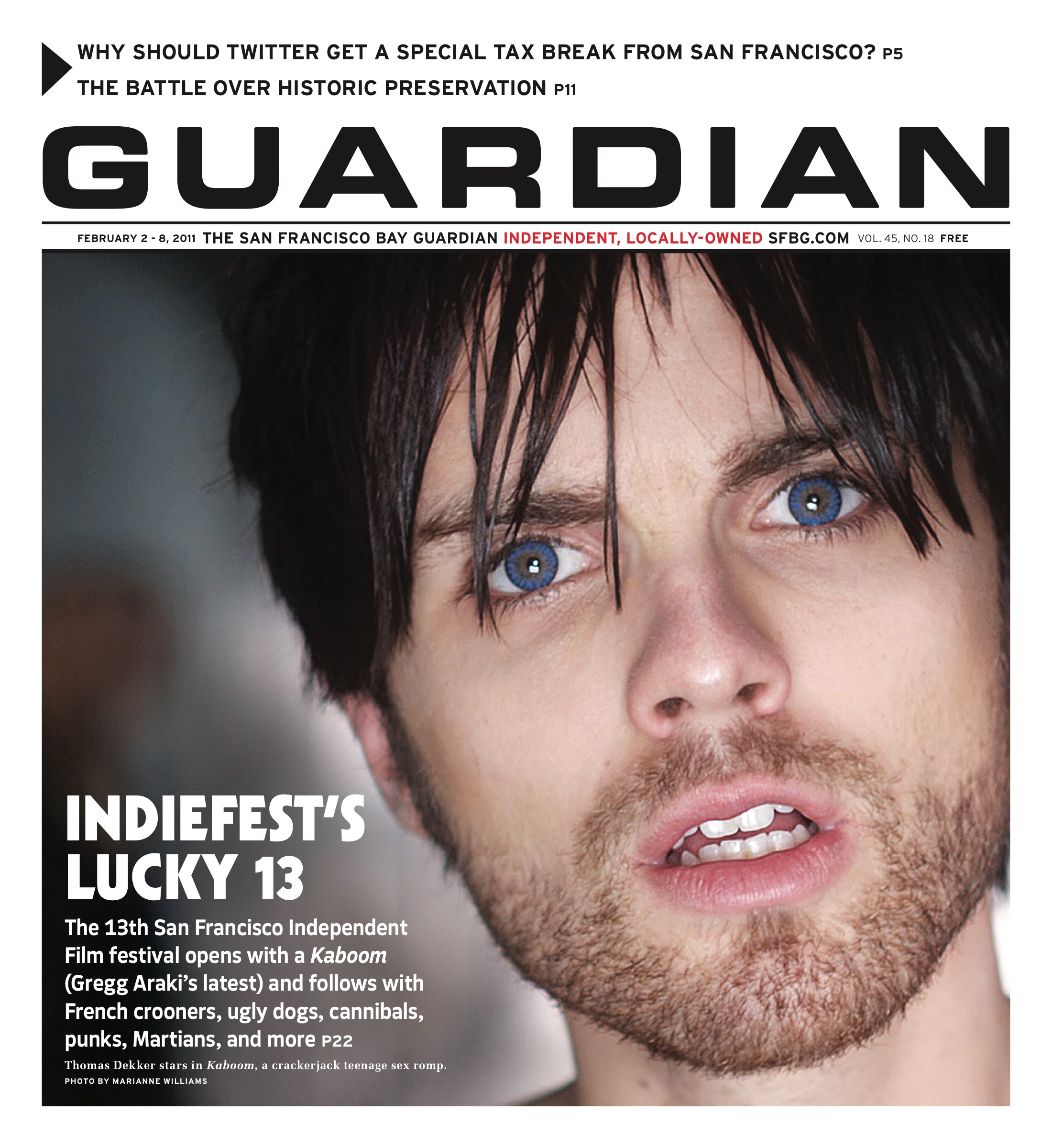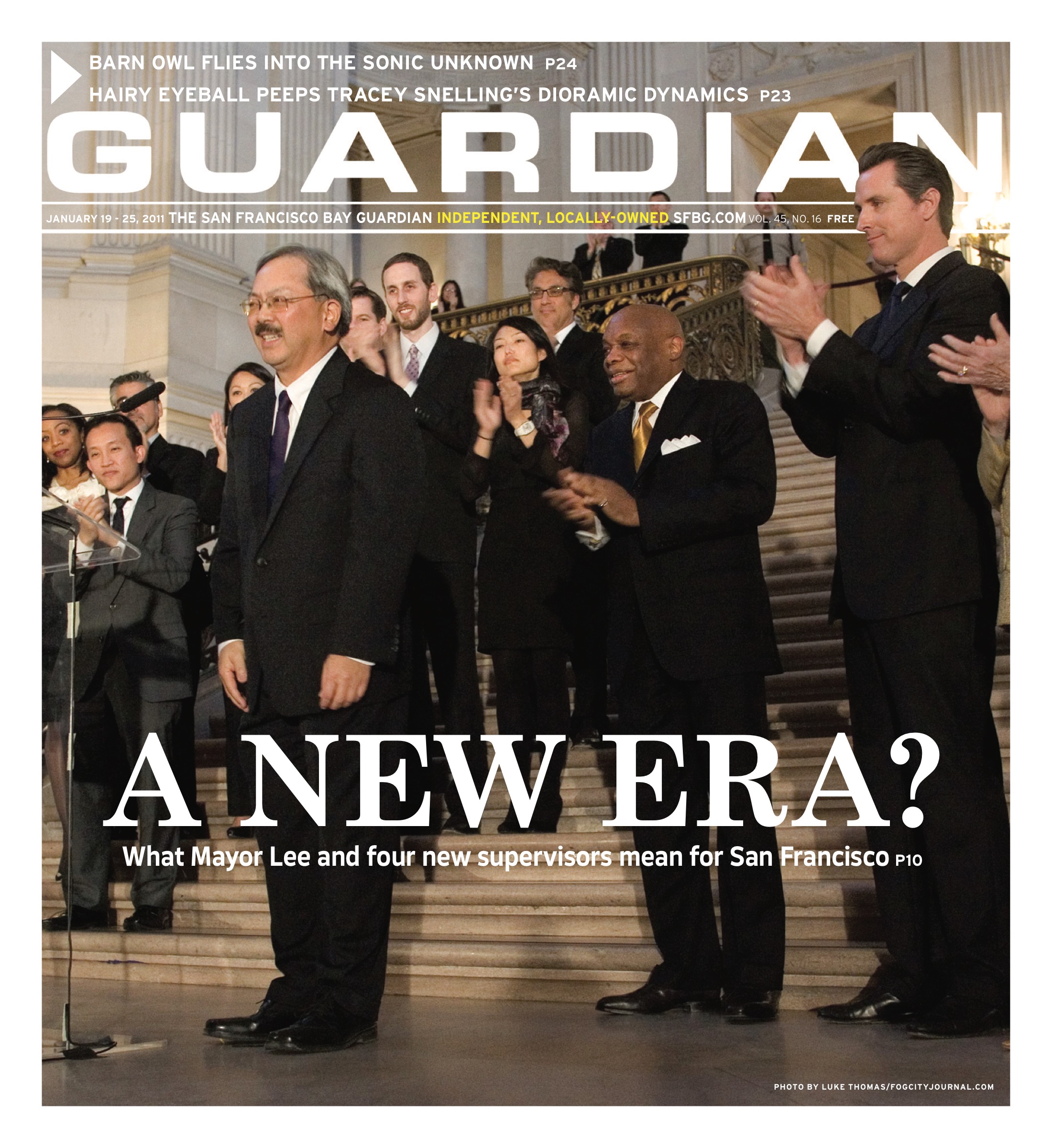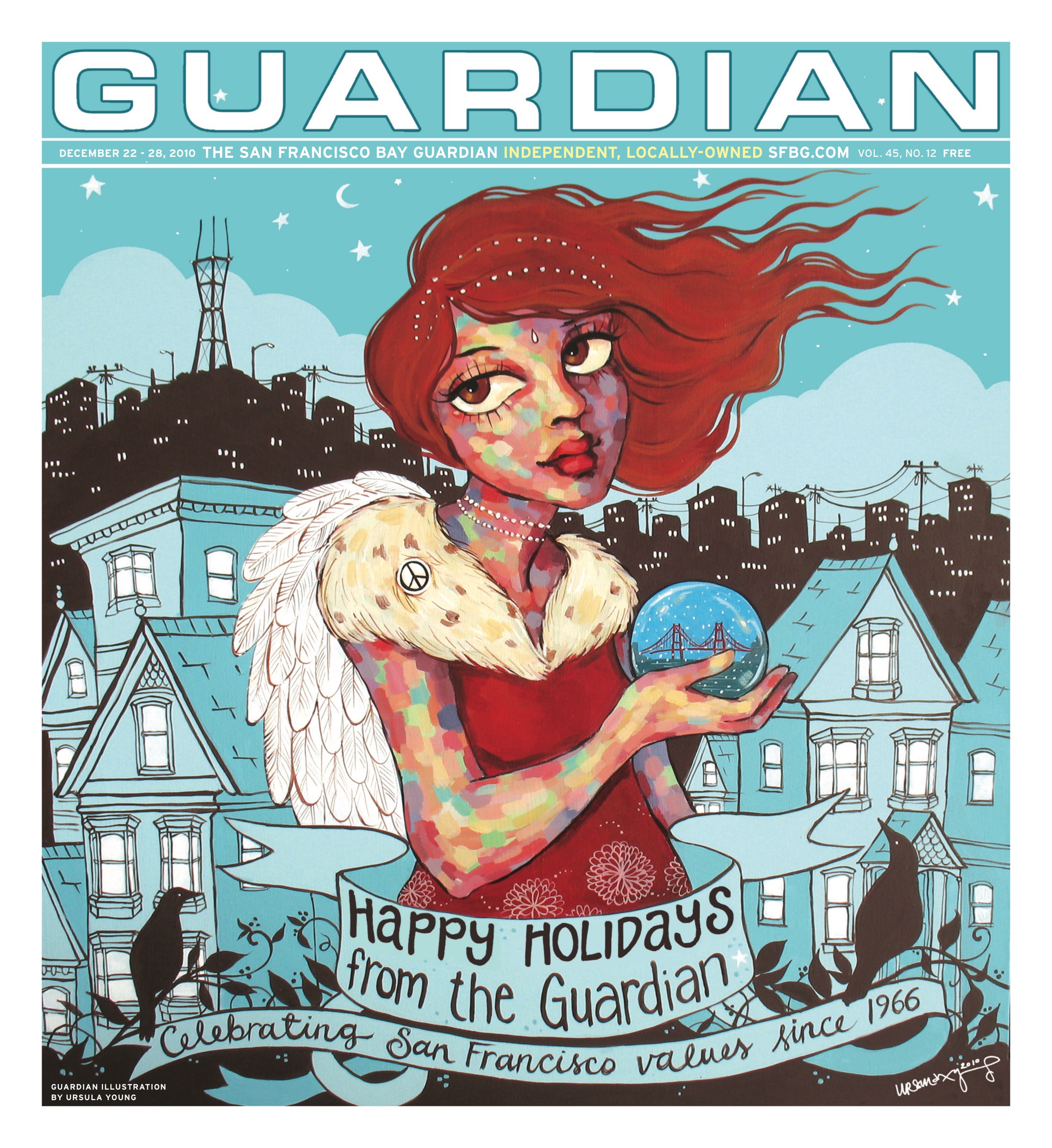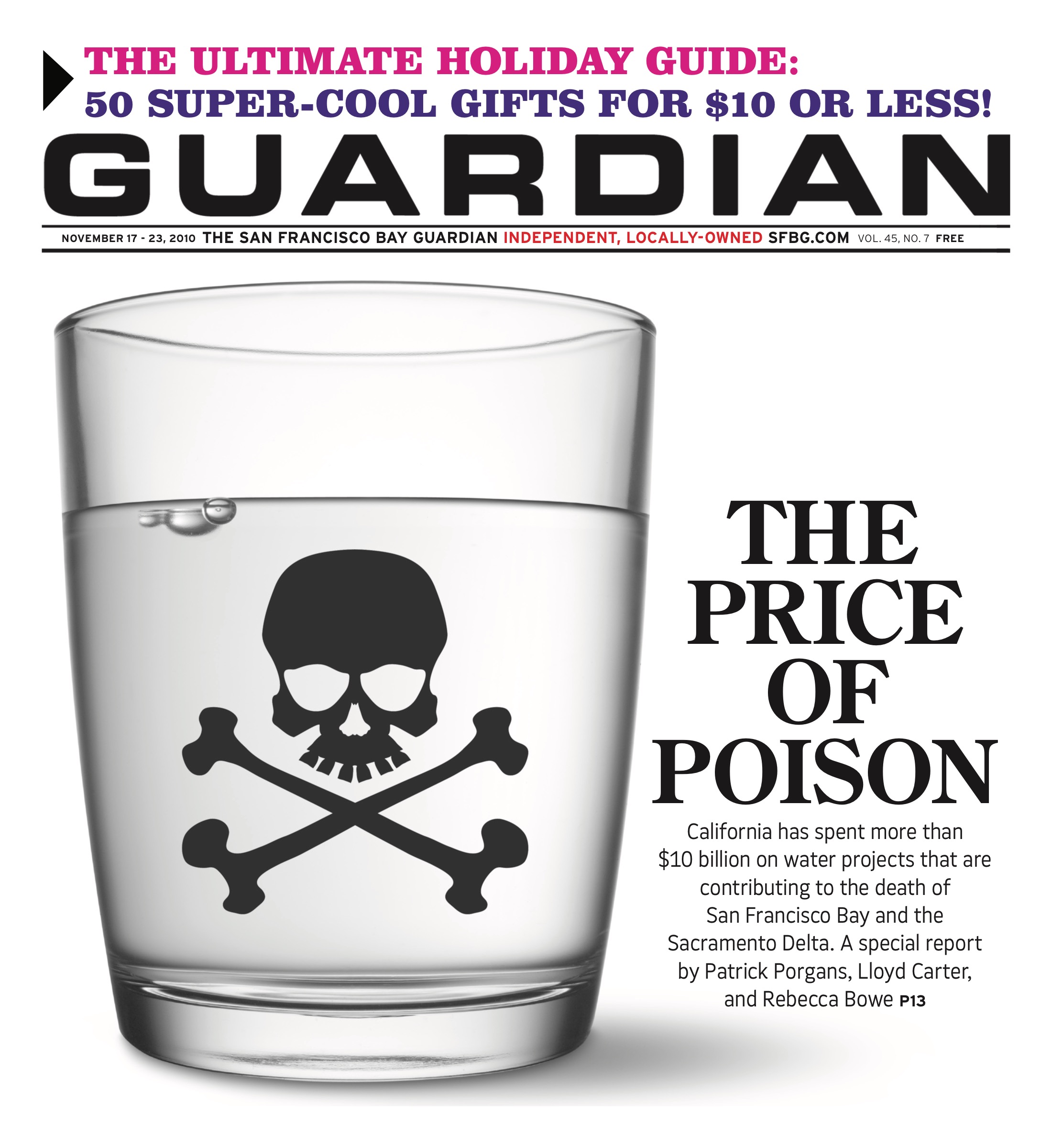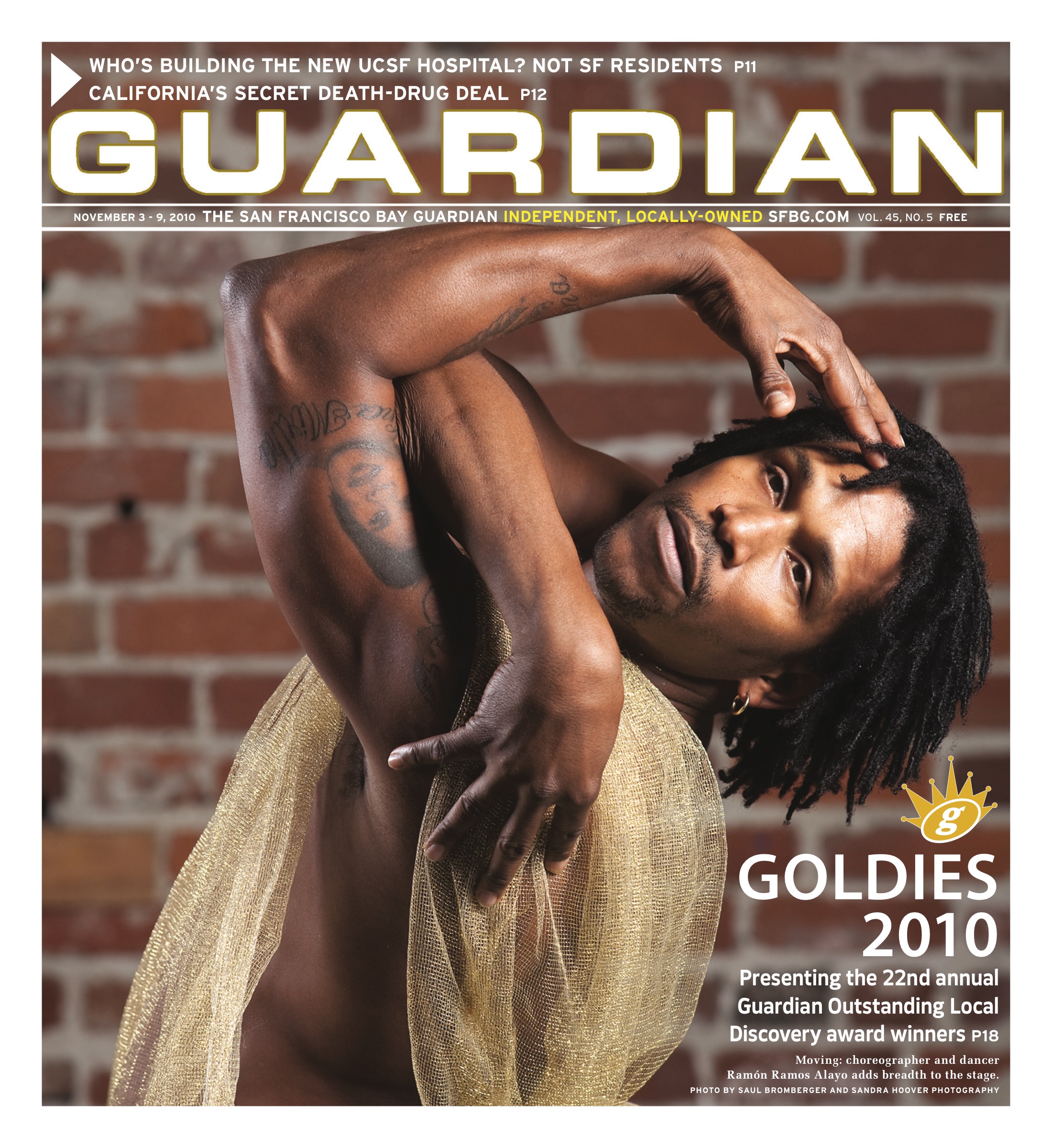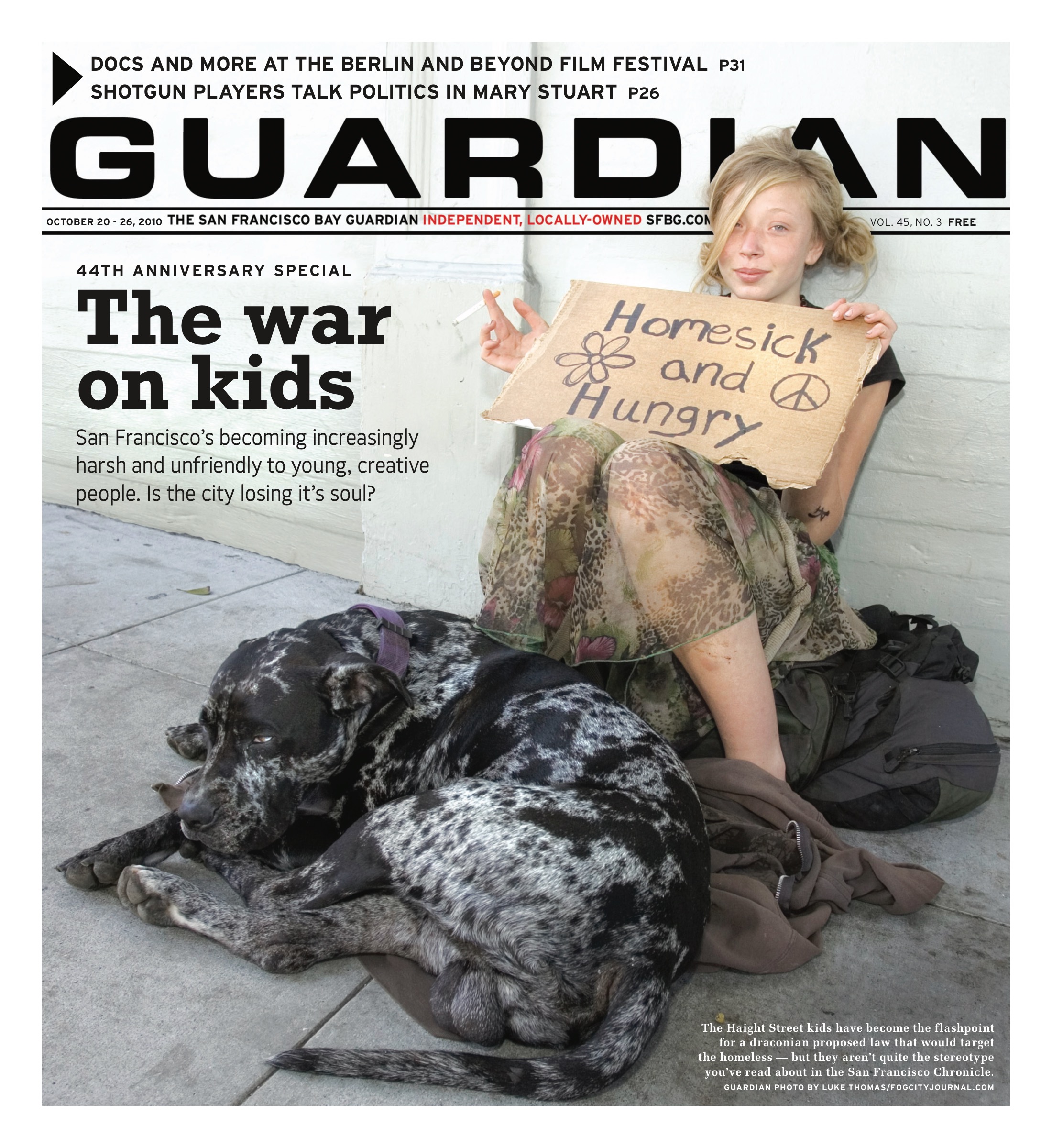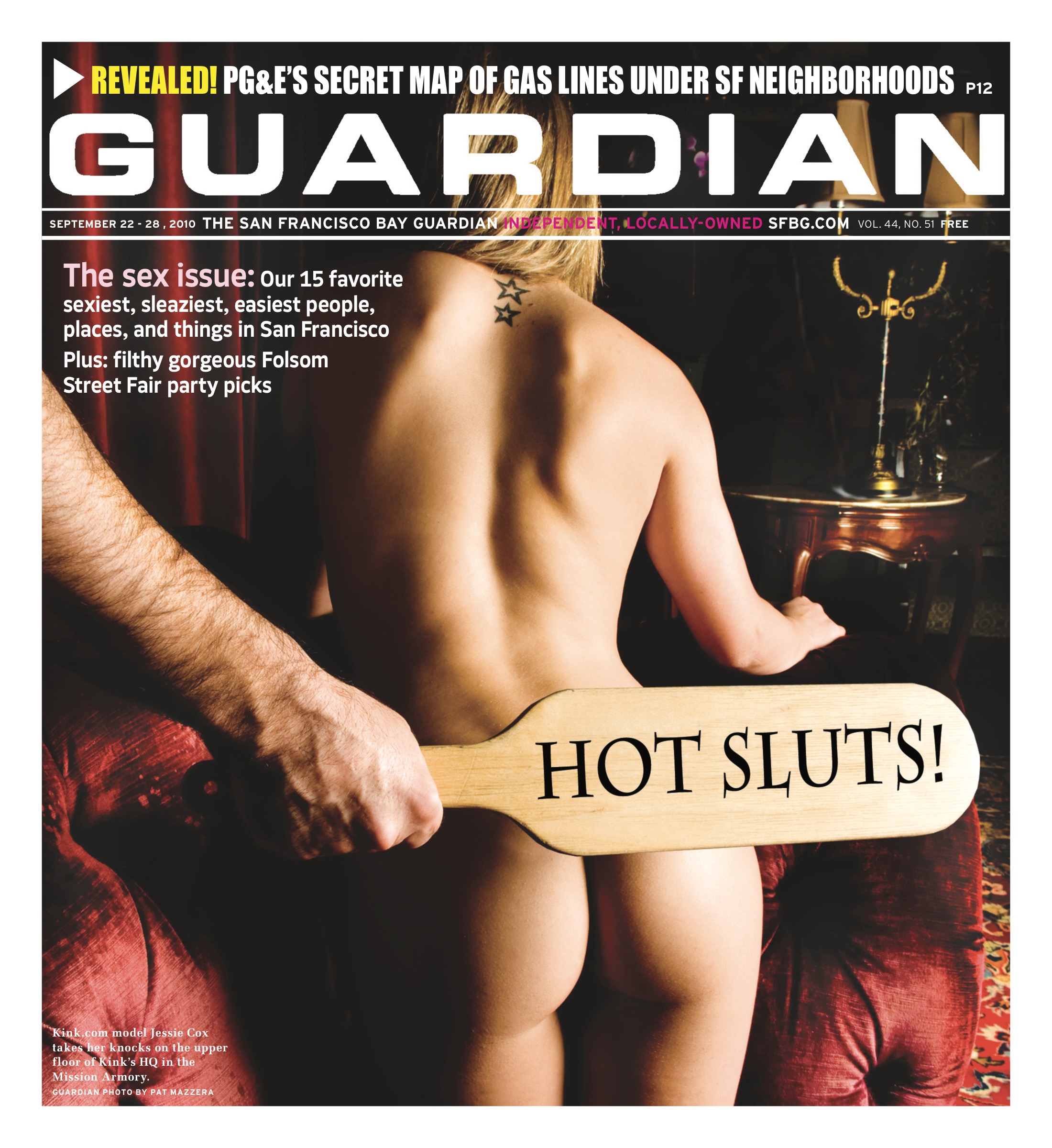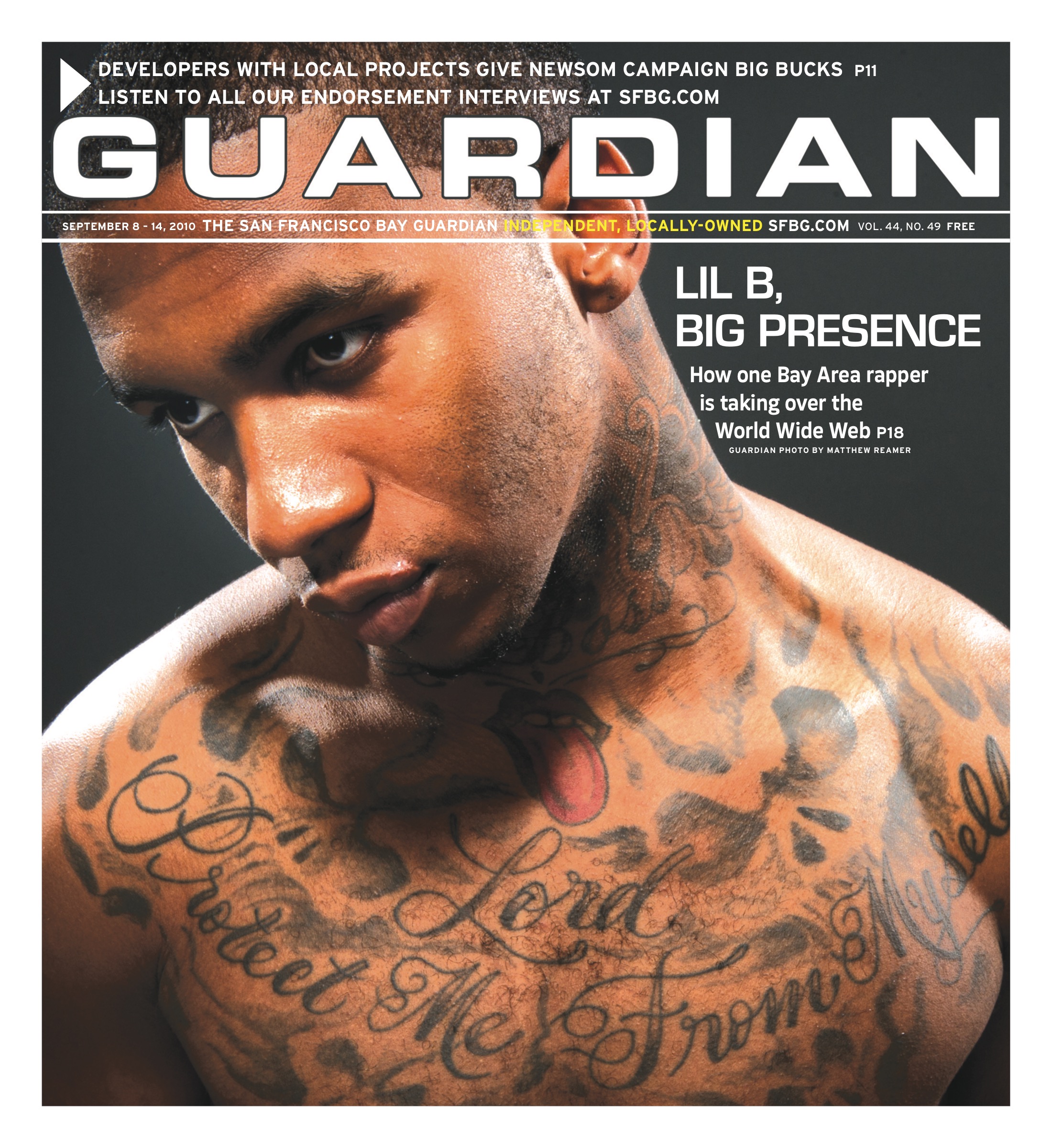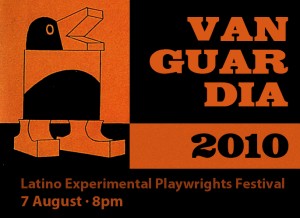THEATER A gorgeous clutter of instruments fills the stage at Z Space/Theater Artaud this week, and audiences, after an eye- and earful of Schick Machine, are invited to go up and play them, too. A musical background is unnecessary: Nothing on stage likely resembles anything you grew up practicing, and anyway all that’s called for is a little rhythm. The show itself gives you a healthy dose, amid a wonderfully designed, gently madcap, almost cosmological musing on the nature and origins of rhythm as well as our yearning embrace of it (and vice versa).
The Paul Dresher Ensemble’s Schick Machine — a collaboration with, among others, writer/director Rinde Eckert — gives the stage over to master percussionist and contemporary music veteran Steven Schick. In the character of musical inventor Laszlo Klangfarben, Schick wanders around a garden playground laboratory of ingeniously crafted percussive and stringed instruments (composer Dresher’s fanciful yet practicable inventions), against a video backdrop evocative of everything from superstrings to abstract expressionist painting to architectural blueprints and scientific scribblings. The instruments of wood and steel form elegant ridges, playful spirals, majestic fans, Ferris wheel–like magic circles, and sonic tulip patches — a kind of Eden for a lone but rarely lonesome madman. Schick’s balding head and glasses compliment the mad scientist look, though his outfit — a high blue apron over white shirt and thin tie — calls to mind an old fashioned small-town grocer.
The thinly-sketched narrative is an excuse for a quiet and contemplative piece of theater, though great explosions of rhythm are mixed in with the goofy humor and crisp, enrapturing visual aesthetic. At the center of it all, the piece suggests, is a single heartbeat.
LADY GREY AND OTHERS
Will Eno’s plays (or at least the half-dozen I’ve seen and/or read) tend toward being tongue-in-cheek questions about the relevance of theater, whether as an art form, a social undertaking, or a compliment to dining out. Self-consciousness is both a conceit and strategy here, the basis for playing with inherited forms and conventions as well as an unevenly successful but sometimes rich brand of humor. The best plays not only win laughs but some pang of recognition, through a deft balancing of the profound and the banal. The less successful plays devolve into pretentiousness and sentimentality. In any case, the idea that the traditional theatrical stage is being overturned can only be indulged if you consider a pretty small section of it.
In Cutting Ball Theater’s presentation of Will Eno’s Lady Grey (in ever lower light) and other plays it’s those inconspicuous “other plays” that are most worth seeing. Lady Grey, like the title suggests, is a shadow of former glory, to wit, Eno’s 2004 breakthrough play, Thom Pain (based on nothing), whose structure — up to and including the title itself — provides the template for this play. Cutting Ball had deserved success with Thom Pain, thanks to actor Jonathan Bock, playing no small part but a big and lonely one: the angry, tortured, sarcastic young man who single-handedly holds the audience hostage for an hour or so, assailing it with words, suspect memories, and bold staring contests.
Lady Grey calls for a similar fearlessness and fierceness, depositing onstage something like a female version of Thom Pain to accost and cajole the “audience” (here too much a written idea of one to avoid those scare quotes) across the fourth wall. In the title and only role, Danielle O’Hare, as directed by Cutting Ball’s Rob Melrose, was inconsistent if occasionally beguiling, rarely seeming to step out from behind the text, or rather to completely own its conceit of not being a text. But Melrose and O’Hare, who have done memorable work together in the past, are also essaying a less inspired play. Grey adds up to a hit-and-miss series of one-liners, not a very compelling total.
The other two short plays that make up the fairly brisk evening prove more rewarding. Intermission, which opens directly after one, is an amusing and almost wise desultory conversation between an older couple (Gwyneth Richards and David Sinaiko), and a younger one (Galen Murphy-Hoffman and O’Hare), during the intermission of a seemingly tedious play about life and death. Melrose gets superbly dry performances from his cast, doing full justice to this light but cunning little play riffing on theater’s capacity for channeling yearning, regret, and blank obliviousness.
Cutting Ball regular Sinaiko then returns for the archly histrionic monologue Mr. Theatre Comes Home Different, a piece that the actor — playing an actor reveling in a state of decidedly Eno-esque self-consciousness — rocks with utter conviction. It’s a high note to end on and, for all the seeming ambivalence and sentiment in this slice of Eno’s oeuvre, went perfectly well with dinner.
SCHICK MACHINE
Through Sun/27, $10–$20
Z Space
450 Florida, SF
(800) 838-3006
LADY GREY (IN EVER LOWER LIGHT)
Through April 10, $15–$50
EXIT on Taylor
277 Taylor, SF
(800) 838-3006

